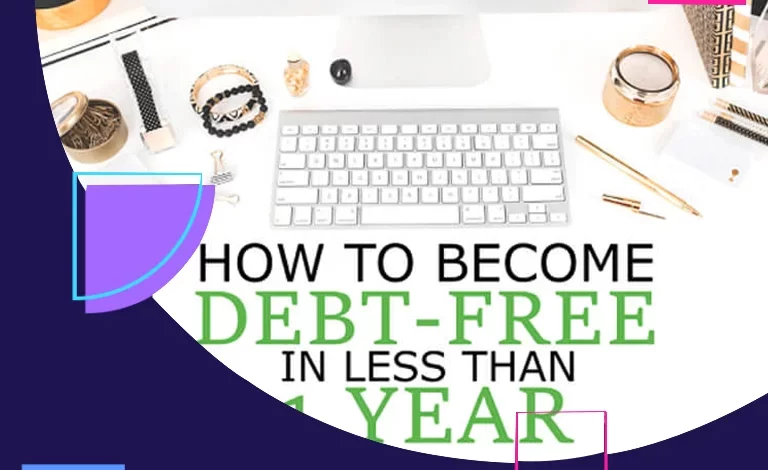
Many people aim to be debt-free, but it may feel distant. Mainly, low-income individuals often deal with more outstanding debts. Yet, solutions are making it more attainable now.
Before that, know these facts:
- Statistics Canada‘s income survey (2021) shows Canadians earn an average of $5,700 monthly.
- 9% of individuals aged 16 and older are in poverty. (Canadian Income Survey, 2021)
- The low-income rate in Canada rose from 9.3% in 2020 to 10.6% in 2021. (2021 Canadian Income Survey)
- About 75% of Canadians have debts. (Canada.ca)
- 30% suffer daily due to heavy loans. (Canada.ca)
- About two-thirds of Canadian families have debt.
- Equifax reported Canada’s consumer debt reached $2.32 trillion in 2022.
- Over half of Canadians (54%) live paycheck to paycheck due to rising living costs.
Knowing about Canada’s average debt and income level has inspired you to become debt free. Debts might overwhelm you, but you can overcome them. Here’s how:
10 steps to becoming debt free in Canada
- 1. Follow the 50/30/20 Rule:
- 2. Try Snowball or Avalanche Technique:
- 3. Seek advice from a Financial Advisor.
- 4. Make a monthly budget.
- 5. Generate extra cash.
- 6. Build savings.
- 7. Cut the cost of credit cards.
- 8. Ensure timely Pay all your bills.
- 9. Steer clears of costly hobbies.
- 10. Avoid borrowing extra.
1) Follow the 50/30/20 Rule:
Try the 50/30/20 rule for budgeting. It divides income into three parts:
Allocate 50% to essential expenses like utilities, rent, medical, and groceries.
Set aside 30% for desires like shopping, outings, nights out, or trips.
Dedicate 20% to achieve financial goals, like paying debts, building emergency funds, and saving for retirement. You can adjust category percentages based on your finances.
2) Try Snowball or Avalanche Technique:
Snowball Method
Start with small debts, then roll payments into bigger ones. While not instant, it boosts motivation and builds momentum by clearing debts individually.
Avalanche Method
The Avalanche method differs from Snowball. Pay minimums on all debts, then tackle high-interest loans. Once the highest debt is cleared, move to the next. Avalanche saves money, but Snowball boosts motivation with visible progress.
3) Seek advice from a Financial Advisor.
Finance experts offer valuable help for your debt situation. Credit counsellors or advisors can analyze your finances and create a plan, saving you time, stress, and money.
4) Make a monthly budget.
Experts stress the importance of assessing your monthly income and expenses first. With this clarity, planning is more straightforward. Many underestimate their debts.
To manage debt, determine owed amounts, repayment deadlines, and interest. Calculate regular expenses and incoming money. Include wages, benefits, and more. List spending for a month – bills, groceries, travel, subscriptions. Subtract outgoings from income to find disposable money for debt repayment.
5) Generate extra cash.
If your regular income can’t cover debts, you might boost it temporarily. Seek a better job, promotion, or more hours at work. Explore various ways to earn extra, like renting out space, using cashback sites, or selling items.
If income drops due to reduced hours or job loss, government support might be available. Use the benefits calculator to check for extra financial aid.
6) Build savings.
Save money through various methods to contribute toward debt repayment. Opt for cheaper groceries, explore social tariffs for broadband, and cancel unneeded subscriptions.
7) Cut the cost of credit cards.
Escape debt by ending reliance on credit. Despite industry claims, closing credit cards is not wise. They perpetuate debt. Eliminate all and break free from the cycle.
8) Ensure timely Pay all your bills.
Timely bill pay off are crucial. Late payments, defaults, or exceeding credit limits result in penalties and higher interest rates. These fees accumulate, so it’s vital to prevent them. If you can’t pay, communicate with your lender for options like payment breaks or reduced payments.
9) Steer clears of costly hobbies.
Pause spending on expensive hobbies like golf, wine, or crafting materials. They may wait while you focus on debt.
10) Avoid borrowing extra.
Consolidation loans are only suitable for some. They can be helpful if they lower costs, but avoid mixing unsecured debts with secured ones that risk your home.











